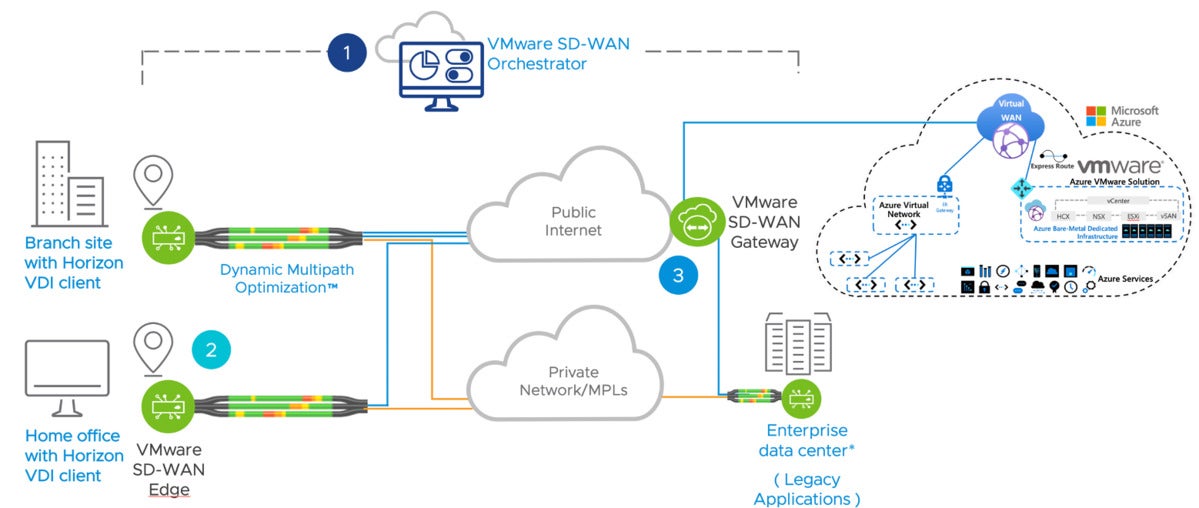
Enterprises have eagerly adopted virtual desktops to advance digital transformation and adapt to the rapid expansion of remote work. As a result of this transformation, delivering a consistent and reliable user experience over a wide area network (WAN) has been a challenge for many. Moving virtual desktops and applications to the cloud can solve part of the problem, but ignores the other application workloads that are on-premises. Fortunately, there is a solution to run virtual desktops and applications both on-premises and in the cloud.
As you pursue digital transformation and move workloads to the cloud, the on-premises desktop virtualization user experience may suffer as a result of greater distances between the applications and their back-end systems – but don’t despair!
VMware Horizon operates in a hybrid and multi-cloud way, so as you move back-end systems to the cloud using Azure VMware Solution (AVS), you can also move your existing VMware Horizon environment to keep the virtual desktops and apps close to the back-end workloads and ensure the best possible user experience.

FIGURE 1: VMware SD-WAN solution with Horizon VDI and AVS
This “lift and shift” migration can be done quickly with no substantial changes to image or application management, OS types, or brokering. With Horizon Cloud on Microsoft Azure, VMware Horizon components are deployed into your Azure subscription but managed as a service by VMware.
Optimizing user experiences
VMware SD-WAN with VMware Horizon hosted on AVS provides organizations with the capabilities to optimize and deliver rich user experiences with virtualized apps and desktops.
VMware Horizon is one of the 3,000+ applications that the VMware SD-WAN deep application recognition feature can recognize. It recognizes VMware Horizon traffic and applies a specific policy to it, such as priority, network service link steering, and service class. The benefit of this feature is that VMware SD-WAN can ensure always-on availability of the VMware Horizon application, for the best possible end user experience.
Business policy is defined on the VMware SD-WAN Orchestrator and automatically pushed to all the VMware SD-WAN Edge devices at branch sites or home offices soon after the Edge device is powered on.
VMware SD-WAN can help aggregate multiple links to act as one (even for a single flow), steer traffic over the best available link, provide inline error correction, as well as reserve bandwidth based on application policies.
With the ability to use any link type, adding bandwidth to remote sites is much easier. VMware has been working closely with customers during the COVID-19 pandemic to deploy SD-WAN in employee home offices, providing them with the same experience with applications at home as they would have in the office.
Self-install
With zero-touch provisioning (ZTP), remote office workers can install the VMware SD-WAN Edge themselves. The user device automatically connects to the cloud-based central management tool, the VMware SD-WAN Orchestrator, to provide immediate employee access to the corporate network. Network managers can see the individual VMware SD-WAN Edges activated and can troubleshoot issues from HQ without traveling to other locations.
Together, VMware Horizon on Azure VMware Solution and Horizon Cloud on Microsoft Azure provide unmatched flexibility to help you deliver desktops in the most cost-effective way while maintaining the best possible user experience. They are an integral part of a digital transformation and can drastically simplify management while increasing user productivity.
Click here to view a webinar about connecting VDI users to VMware Horizon workloads with Azure VMware solution and VMware SD-WAN.









